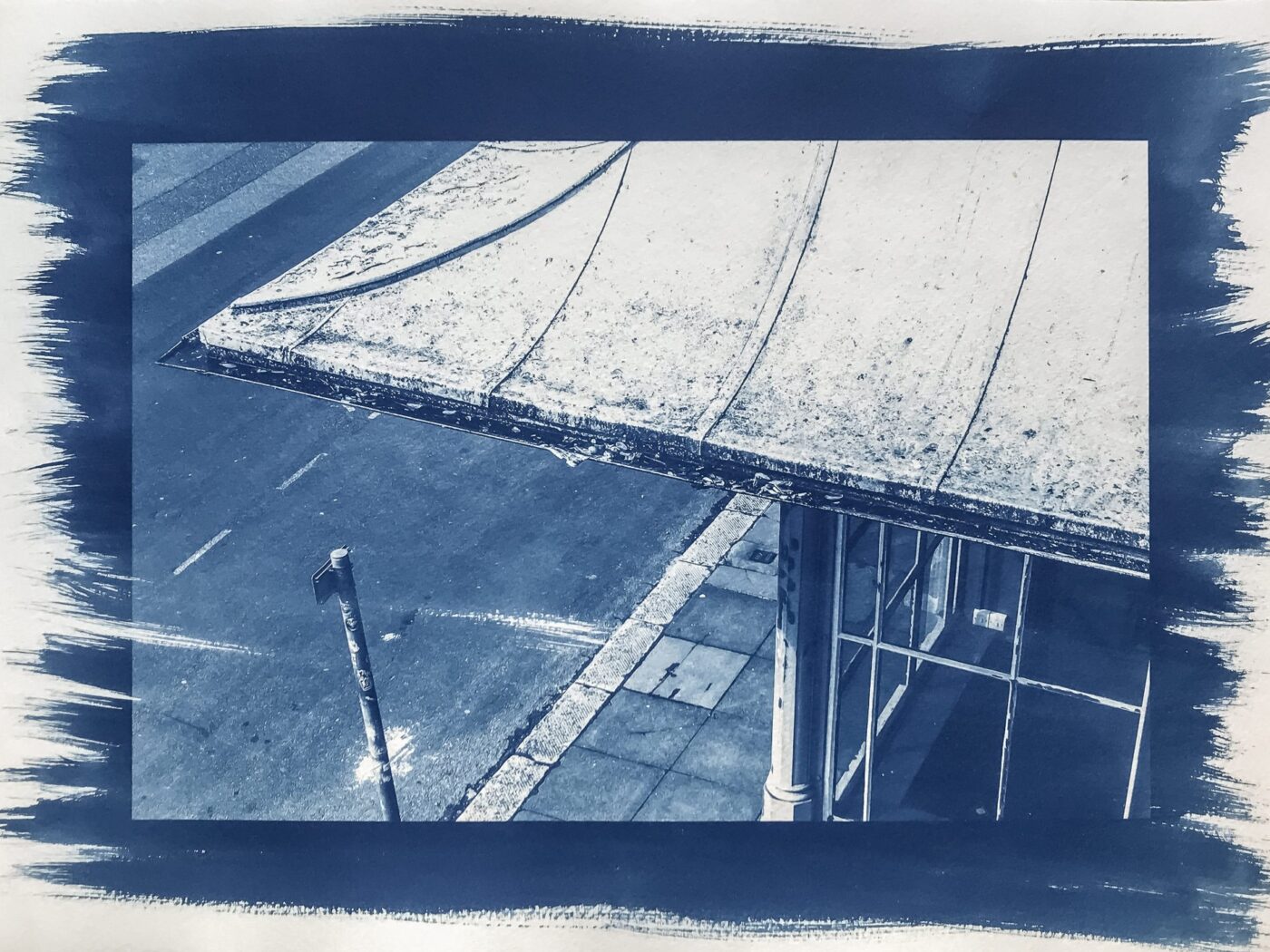Loosening the anchor of time and space
Last time I wrote about using cyanotype with landscape and seascape photographs. This week I wanted to share with you my experiments using the technique with architectural photographs.
Trying to visualise how a digital photograph will translate as a hand-printed cyanotype is not straight forward. As I mentioned in my last post, it is such long process getting from the beginning to the end result that I need to have a pretty good idea whether a photo will work.
There is always the element of surprise, though. Photos that I feel sure of can fall flat, and ones that seem like a long shot can be bang on the money.
Using the technique with architectural photography is an interesting shift away from the organic forms of landscapes. I have been working on this idea for some time and wanted to try focussing on a unified group of photographs taken from a single project.
My recent shoot of Madeira Terrace in Brighton seemed a good place to start. This photograph was taken from the upper level terraces looking down onto the green copper roof of the Concorde 2 nightclub.
There is something about the cyanotype process that can remove the anchor of time and space from an image, highlighting instead the shape, texture and light of the composition. That is an exciting dynamic to be working with.
